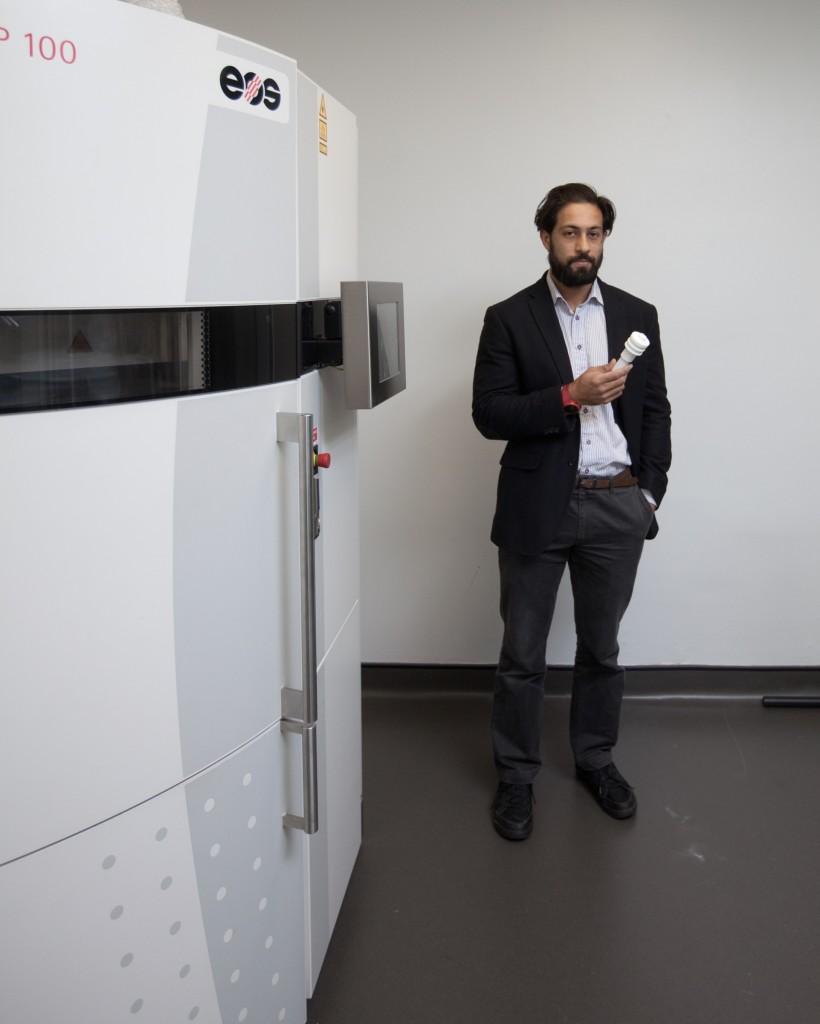Anglian Water & University of Sheffield are Exploring 3D Printing in Water Technology
Published on by Water Network Research, Official research team of The Water Network in Technology
Anglian Water has become the first UK water company to explore the future of 3D printing technology
The technology of 3D printing is often associated with high level industrial manufacturing, allowing for superior quality in components, while reducing cost. There are also a multitude of benefits to be offered in nearly every sector, all the way down to the hobbyist at home 3D printing from the desktop and expanding their world as never before.
 Another area where 3D printing is proving to have great potential though is in that of self-sustainability and resources. We’ve followed numerous stories regarding the use of 3D printing for everything from hand water pumps to 3D printed components for groundbreaking water filters and even use of the technology in larger endeavors like portable bathrooms.
Another area where 3D printing is proving to have great potential though is in that of self-sustainability and resources. We’ve followed numerous stories regarding the use of 3D printing for everything from hand water pumps to 3D printed components for groundbreaking water filters and even use of the technology in larger endeavors like portable bathrooms.
Now, the UK is investigating ways to streamline engineering methods in maintaining the water sector. Anglian Water has become the first UK water company to explore the future of 3D printing technology.
 This was achieved through collaboration with The Sheffield Water Centre, an interdisciplinary research centre at the University of Sheffield, dedicated to solving major challenges, including those of sustainability in the water sector.
This was achieved through collaboration with The Sheffield Water Centre, an interdisciplinary research centre at the University of Sheffield, dedicated to solving major challenges, including those of sustainability in the water sector.
Seeing this as a sector that could benefit significantly from the 3D printing of crucial components, they began to explore how this could be done with higher quality, greater productivity, and better savings.
“It’s early days but the potential for this technology in our industry is very exciting,” said Fionn Boyle, Anglian Water Innovation Technologist.
“You can foresee 3D printers being installed in our technicians’ vans in the future so that if they are out on a job and need a vital part they can simply download a file and print it out there and then. If we are in an emergency repair situation this could mean we can stop more leaks and return people’s water supplies much more quickly.”
Beginning with a filter nozzle, engineers from the University’s Departments of Mechanical Engineering and Civil and Structural Engineering began performing tests. With resources boasting seven departments and two interdisciplinary programs covering all the engineering disciplines, the researchers are at one of the best institutions in the world to perform these studies.
 “If one nozzle needs replacing then all the others in the same bed must be replaced at the same time to ensure even wear,” Fionn explains. “Also the original design may no longer be stocked by a manufacturer. But if we could simply scan in another nozzle and print out an individual replacement it would save time, money and also the carbon footprint of getting it shipped to us.
“If one nozzle needs replacing then all the others in the same bed must be replaced at the same time to ensure even wear,” Fionn explains. “Also the original design may no longer be stocked by a manufacturer. But if we could simply scan in another nozzle and print out an individual replacement it would save time, money and also the carbon footprint of getting it shipped to us.
“There are hurdles to cross before 3D printing becomes widely used in the industry – including the patent issues associated with scanning and printing these parts. But it is essential we explore the possibilities now and learn about the potential pitfalls so that we can pave the way for it to be rolled out a few years down the line.”
Now, engineers are working their way up the list of larger and essential parts, as well as discussing the use of 3D printed fire hydrant caps for PWN, which is a Dutch water company. Because these caps are often either lost or broken, 3D printing would offer an affordable alternative to maintaining them.
Experts at the university, such as Dr. Kamran Mumtaz, Lecturer in Additive Manufacturing in the University of Sheffield’s Faculty of Engineering, see 3D printing as highly beneficial in that it offers greater latitude in designing components, better affordability, as well as efficiency. While they will be exploring the scope of 3D printing in water technology further, the outlook for the future is quite positive.
Source: 3D Print
Read More Related Content On This Topic - Click Here
Media
Taxonomy
- Technology
- Water Filtration
- Water